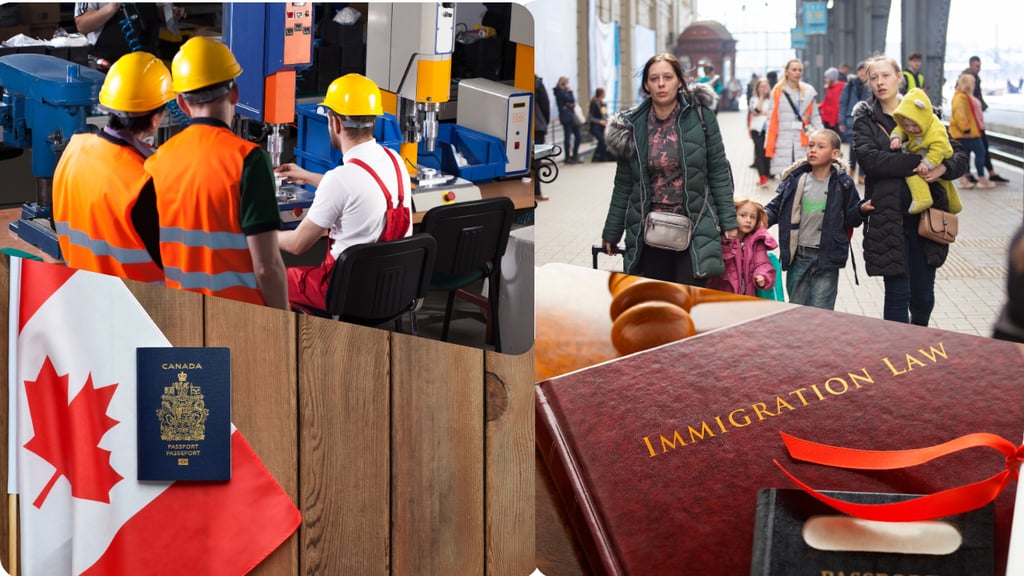
Canada Ends Visitor Visa to Work Permit Policy: What It Means for Immigrants and Employers
Discover the impact of Canada's decision to end the visitor visa to work permit policy. Learn how this change affects immigrants and employers in Canada. #CA


Canada Ends Policy Allowing Visitor Visa Holders to Apply for Work Permits: What You Need to Know
Canada has long been a destination of choice for immigrants seeking better opportunities and a higher quality of life. However, a recent policy shift by the Canadian government marks a significant change for those on visitor visas who were hoping to work in the country. As of [insert date], Canada has officially ended the policy that allowed visitor visa holders to apply for work permits from within the country. This move has generated considerable discussion among potential immigrants and employers alike.
Background: The Policy and Its Purpose
The policy, initially introduced as a temporary measure during the COVID-19 pandemic, allowed visitors already in Canada on temporary visas to apply for work permits without needing to leave the country. This was a significant departure from the usual process, which required applicants to leave Canada to apply for a work permit from abroad.
The rationale behind the policy was twofold: to address labor shortages in certain sectors and to provide relief to visitors stranded in Canada due to travel restrictions. It was a win-win for both employers who needed workers and for visitors who were unable to return to their home countries due to the pandemic.
Why the Policy Is Ending
With the pandemic now largely under control and travel restrictions eased, the Canadian government has decided to end this special provision. The return to the pre-pandemic policy framework is seen as a move to restore the standard immigration processes and ensure that work permits are granted through the proper channels.
Officials have cited the need to maintain the integrity of Canada’s immigration system and ensure that all applicants are processed under the same rules. There is also a concern that continuing the policy might encourage individuals to enter Canada on a visitor visa with the intention of bypassing the regular work permit application process.
Impact on Potential Immigrants
The end of this policy will likely have significant implications for those planning to work in Canada. Potential immigrants now need to secure a job offer and apply for a work permit before entering the country, as was the case before the pandemic. This change may also impact employers who have relied on this pool of potential workers to fill urgent positions.
For many, this means a return to the traditional immigration pathways, such as the Express Entry system, the Provincial Nominee Program (PNP), or the Temporary Foreign Worker Program (TFWP). These programs typically require a job offer from a Canadian employer and a positive Labor Market Impact Assessment (LMIA), which can be a lengthy and complex process.
What This Means for Employers
Canadian employers, particularly those in industries facing labor shortages, may feel the impact of this policy change. The temporary measure had provided a quicker, more flexible option for filling urgent positions, especially in sectors like agriculture, hospitality, and healthcare. With the policy now ended, employers may need to adjust their hiring strategies and plan for longer timelines when recruiting foreign workers.
Looking Forward: The Future of Canadian Immigration
While this policy change may be seen as a step back to pre-pandemic norms, it also underscores the evolving nature of Canadian immigration policy. Canada continues to welcome immigrants and foreign workers, but the pathways for entry are being refined to ensure a balanced and fair process for all applicants.
For those seeking to work in Canada, it’s now more important than ever to understand the requirements and plan ahead. Consulting with immigration experts or legal professionals can provide valuable guidance in navigating the complexities of the Canadian immigration system.
In conclusion, while the end of this policy might present new challenges for potential workers and employers, it also marks a return to a more regulated and consistent immigration process, one that upholds the integrity and fairness of the system as a whole.
